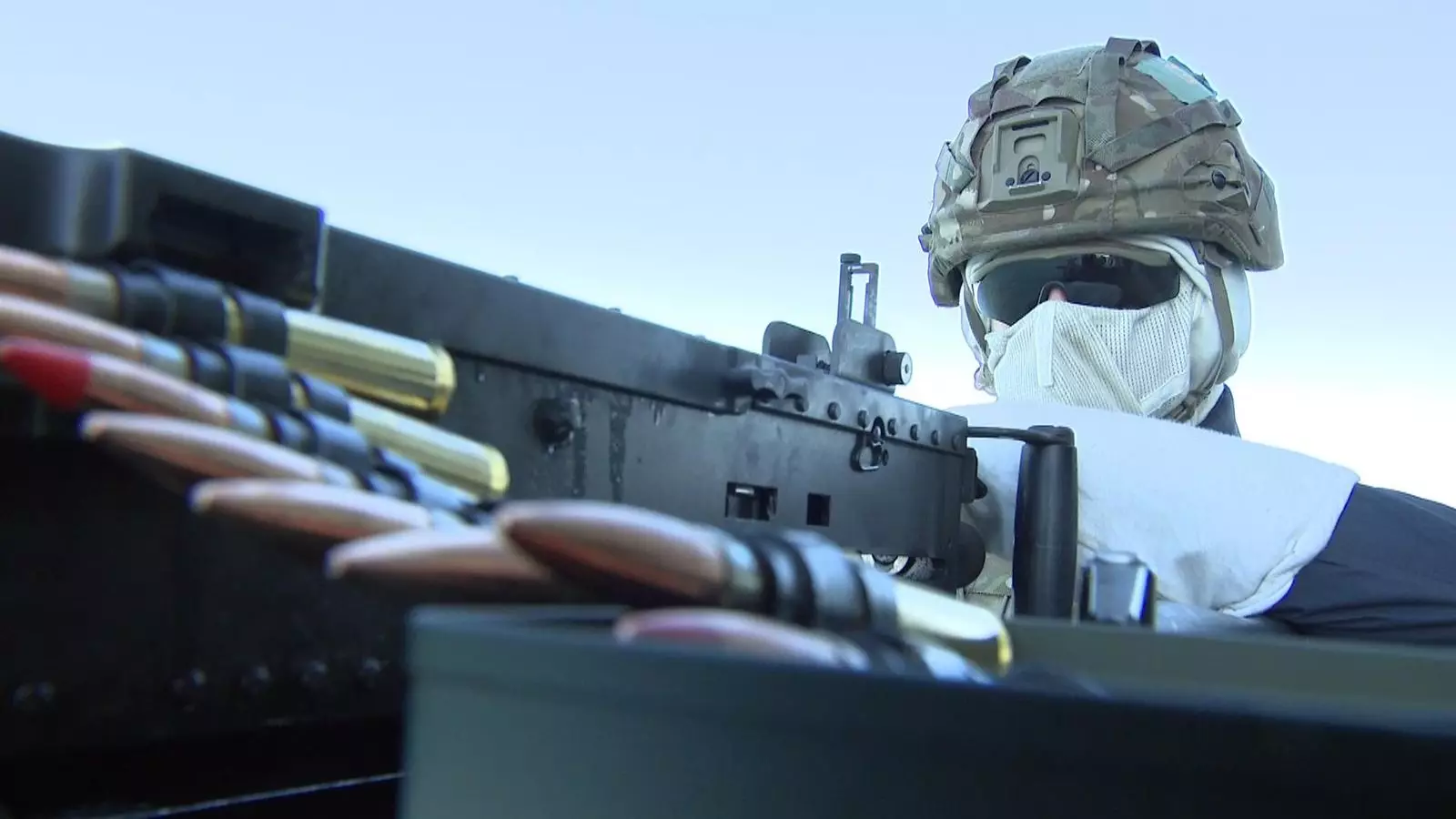As the world teeters on the brink of geopolitical chaos, the Royal Navy’s HMS Dauntless stands as an emblem of resilience and might in a dangerously shifting landscape. Recently, during a high-stakes exercise off the coast of Wales, the crew showcased their defensive capabilities against a simulated deluge of aerial drones and uncrewed vessels. “Action stations!” barked the voice over the intercom, awakening the crew to a sense of urgency akin to the night before a storm. The presence of missile systems and artillery on the destroyer painted a formidable picture, but one must question if sheer firepower is enough in the face of evolving threats.
The rehearsal involved not just practice rounds but showcased real unmanned aerial systems posing a credible maritime menace. In an age where technology has escalated the nature of warfare, it’s worth pondering whether these conventional preparations are merely a nod to tradition rather than a genuine response to future combat scenarios. As realistic as these exercises appear, they also reflect a reactive military posture rather than one grounded in proactive deterrence.
The Role of Politics in Military Strategy
Politics casts a long shadow on military operations. As the Dauntless prepares for its forthcoming deployment to Asia, underlying tensions between global powers inevitably seep into the strategic fabric of military readiness. Minister Luke Pollard, speaking from the deck of HMS Dauntless, declared that the ship was “well prepared” to defend itself. However, this bravado must be scrutinized against escalating tensions between Washington and Tehran. With threats of military action looming over Iran, the question arises: will the UK find itself enmeshed in another foreign conflict, potentially diverting its warships to appease the United States?
It’s no secret that the United Kingdom’s military strategies often align closely with American interests. Yet, this reliance necessitates an honest examination of whether the UK’s objectives are inherently aligned with its own national security or merely a reflection of transatlantic camaraderie. It’s disheartening to think that the UK might be pulled into a conflict not fully of its making, aligning its assets further away from home while vulnerable to emerging threats closer to its shores.
The Reality of Military Readiness
Despite impressive technology like the Phalanx cannon, capable of delivering 3,000 rounds per minute, one must question whether reliance on such machinery can compensate for the dwindling scale of the Royal Navy’s fighting capacity. The grim reality is that years of defense cuts have eroded not only manpower but the collective morale that comes with a well-rounded, adequately funded military force. While the government has proposed an increase in defense spending amounting to 2.5% of GDP by 2027, many defense insiders dub this increase as grossly inadequate—a mere pittance when the world is attentive to the ominous flexing of military might in regions like the South China Sea or the Middle East.
Is it truly enough to underscore the current perilous landscape? The need for rapid modernization and an expansion of naval capabilities is evident, as geopolitical competitors invest significantly in new technologies and strategies. The failure to adapt may render the once-proud naval fleet obsolete in the face of modern warfare tactics.
Rethinking Military Strategy in a Changing World
Recent military engagements around the globe, particularly in Ukraine, illuminate the necessity for an adaptable military structure that doesn’t merely react but anticipates the challenges of a multi-domain battlefield. The dilemma lies not only in combat readiness but also in political will. A military that finds itself constantly on the defense risks not just its own operational integrity but, more critically, the national security of the United Kingdom.
The Royal Navy is at a crossroads, facing the dual challenge of evolving threats and budgetary constraints. The exercise aboard HMS Dauntless verifies one point unequivocally: adapting to the rapidly changing dynamics of warfare will require not only investment in technology but a renewed commitment to a coherent and independent military strategy. The journey ahead demands not just a restoration of military might but a reimagining of what it means to project power in an era defined by uncertainty and rapid change. The stakes are undeniably high, and the time for complacency has long passed.


Leave a Reply